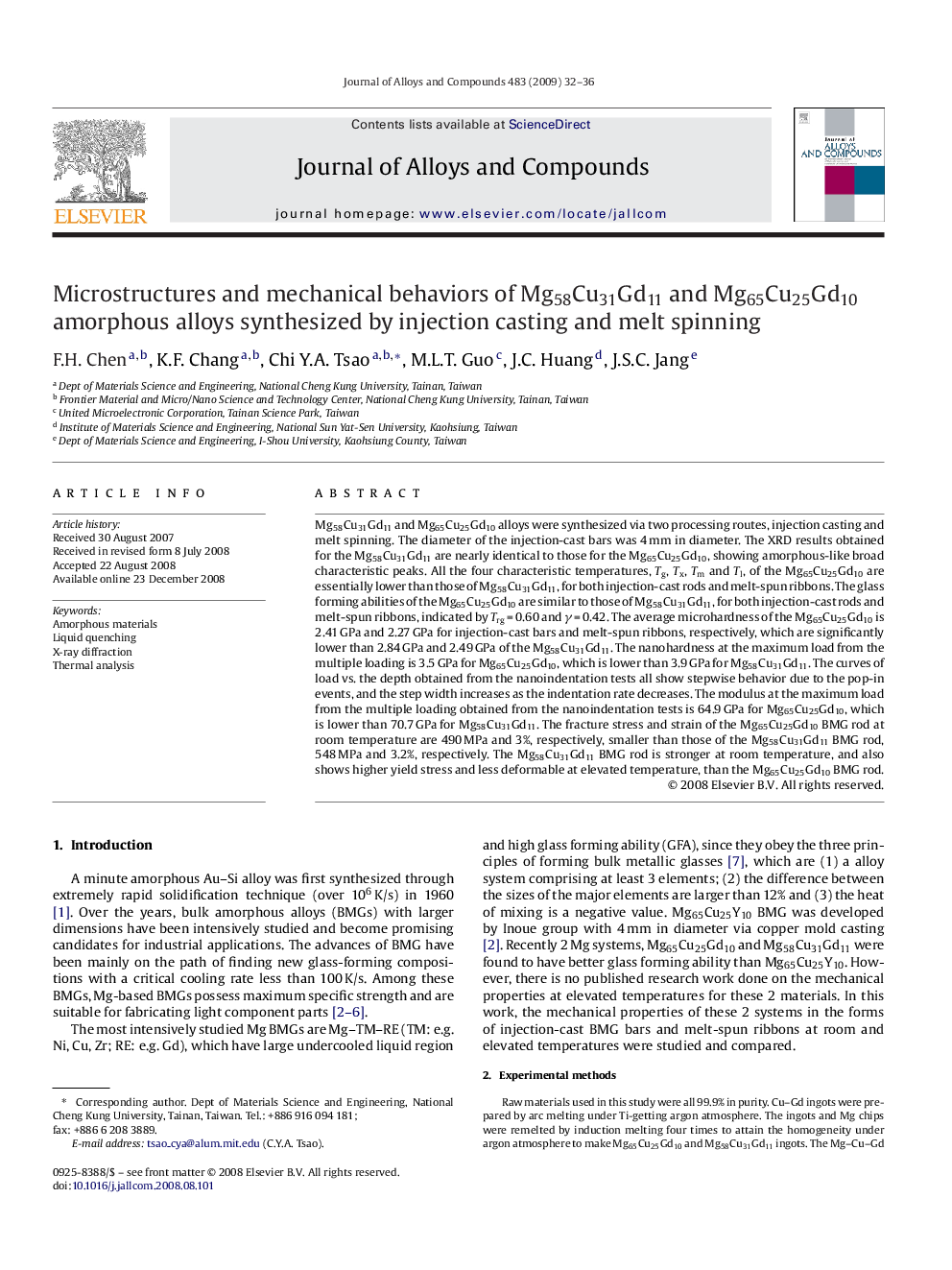| Article ID | Journal | Published Year | Pages | File Type |
|---|---|---|---|---|
| 1622402 | Journal of Alloys and Compounds | 2009 | 5 Pages |
Abstract
Mg58Cu31Gd11 and Mg65Cu25Gd10 alloys were synthesized via two processing routes, injection casting and melt spinning. The diameter of the injection-cast bars was 4 mm in diameter. The XRD results obtained for the Mg58Cu31Gd11 are nearly identical to those for the Mg65Cu25Gd10, showing amorphous-like broad characteristic peaks. All the four characteristic temperatures, Tg, Tx, Tm and Tl, of the Mg65Cu25Gd10 are essentially lower than those of Mg58Cu31Gd11, for both injection-cast rods and melt-spun ribbons. The glass forming abilities of the Mg65Cu25Gd10 are similar to those of Mg58Cu31Gd11, for both injection-cast rods and melt-spun ribbons, indicated by Trg = 0.60 and γ = 0.42. The average microhardness of the Mg65Cu25Gd10 is 2.41 GPa and 2.27 GPa for injection-cast bars and melt-spun ribbons, respectively, which are significantly lower than 2.84 GPa and 2.49 GPa of the Mg58Cu31Gd11. The nanohardness at the maximum load from the multiple loading is 3.5 GPa for Mg65Cu25Gd10, which is lower than 3.9 GPa for Mg58Cu31Gd11. The curves of load vs. the depth obtained from the nanoindentation tests all show stepwise behavior due to the pop-in events, and the step width increases as the indentation rate decreases. The modulus at the maximum load from the multiple loading obtained from the nanoindentation tests is 64.9 GPa for Mg65Cu25Gd10, which is lower than 70.7 GPa for Mg58Cu31Gd11. The fracture stress and strain of the Mg65Cu25Gd10 BMG rod at room temperature are 490 MPa and 3%, respectively, smaller than those of the Mg58Cu31Gd11 BMG rod, 548 MPa and 3.2%, respectively. The Mg58Cu31Gd11 BMG rod is stronger at room temperature, and also shows higher yield stress and less deformable at elevated temperature, than the Mg65Cu25Gd10 BMG rod.
Related Topics
Physical Sciences and Engineering
Materials Science
Metals and Alloys
Authors
F.H. Chen, K.F. Chang, Chi Y.A. Tsao, M.L.T. Guo, J.C. Huang, J.S.C. Jang,
